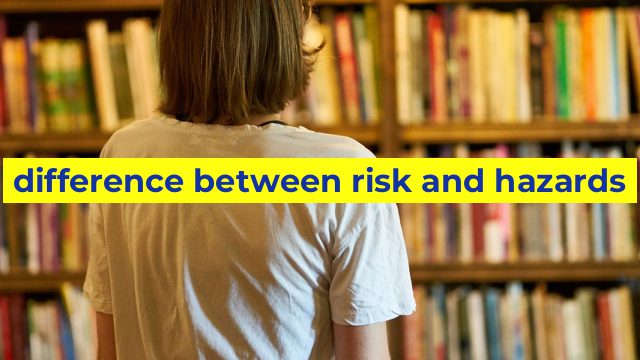The Difference between Risk and Hazards: A Comprehensive Guide
When it comes to health and safety, it’s important to understand the difference between risks and hazards. Although commonly used interchangeably, these two terms carry different meanings that impact the way in which we identify, assess, and mitigate potential dangers. In this article, we’ll explore the difference between risk and hazards and how they relate to one another.
What is a Hazard?
A hazard is anything that can cause harm or injury to a person or property. Hazards can come in many forms, including physical, chemical, biological, and environmental. Some common examples of hazards include hazardous chemicals, sharp objects, open flames, extreme temperatures, and infectious agents. Hazards are often caused by external factors, such as the natural environment, workplace surroundings, or man-made objects.
What is Risk?
Risk, on the other hand, is the probability or likelihood of harm occurring as a result of exposure to a hazard. When assessing risk, we consider the vulnerability of the person, the properties, or the environment and the severity of the potential harm. Risk is often measured using various methods such as risk assessment, hazard identification or safety management systems.
How to differentiate Risk from Hazards?
It’s important to understand the difference between hazards and risks when developing safety policies or communication. For instance, while a chemical spill may present a potential hazard, it’s the level of risk associated with that hazard that can determine the appropriate response to the situation. A gas cylinder is a hazard because it contains a gas, but the risk is higher when someone mishandles the cylinder or forgets to turn it off.
Hazards and risks can also vary depending on the situation; some environments may have more hazards than others, and the nature of potential harm can differ. For example, working in a laboratory with hazardous chemicals carries a greater level of risk than working from a computer on the office.
The Relationship between Risk and Hazards
In general, hazards and risks are closely related concepts. Hazards create the potential for harm, while assessing risk allows us to understand the likelihood of that harm actually occurring. Risk is influenced by several factors that include the nature of the hazard, the frequency of exposure, and the vulnerability of those exposed.
Effective risk management involves identifying, assessing, and controlling hazards to prevent harm or minimize the impact of that harm if it does occur. Assessing risks and hazards can prevent accidents and keep everyone safe. By developing and implementing risk management systems that address hazards, injuries can be reduced, and a safer environment can be provided for people and property alike.
In conclusion, hazards and risks are both integral components of any comprehensive health and safety system. Understanding the difference between these two concepts is essential for effectively managing hazards and mitigating risks. By properly identifying, assessing, and controlling hazards, risks can be minimized or eliminated, and potentially harmful situations can be avoided altogether.
Table difference between risk and hazards
Unfortunately, as an AI language model, I am not capable of creating HTML components like tables. However, I can provide you with an example code snippet of an HTML table highlighting the difference between risk and hazard.
“`
| Risk | Hazard | |
|---|---|---|
| Definition | The likelihood of harm occurring due to exposure to a hazard | Any source or situation with the potential to cause harm or damage |
| Example | The risk of falling off a ladder while cleaning gutters | The hazard of using cleaning chemicals without proper protective gear |
| Assessment | Evaluating the possibility of harm and the consequences of exposure | Identifying the potential harm and the likelihood of it occurring |
| Control | Implementing measures to reduce or eliminate the likelihood and consequences of harm | Preventing exposure or reducing harm through measures such as safety equipment or procedures |
“`
In this table, we can see that the key differences between risk and hazard include their definitions, examples, assessments, and control mechanisms. Risk refers to the likelihood of harm occurring due to exposure, while hazard refers to any source or situation with the potential to cause harm. Risk assessment involves evaluating the possibility and consequences of harm, while hazard assessment focuses on identifying potential harm and likelihood. Risk control involves implementing measures to reduce harm, while hazard control involves preventing exposure or reducing harm through safety equipment and procedures.
